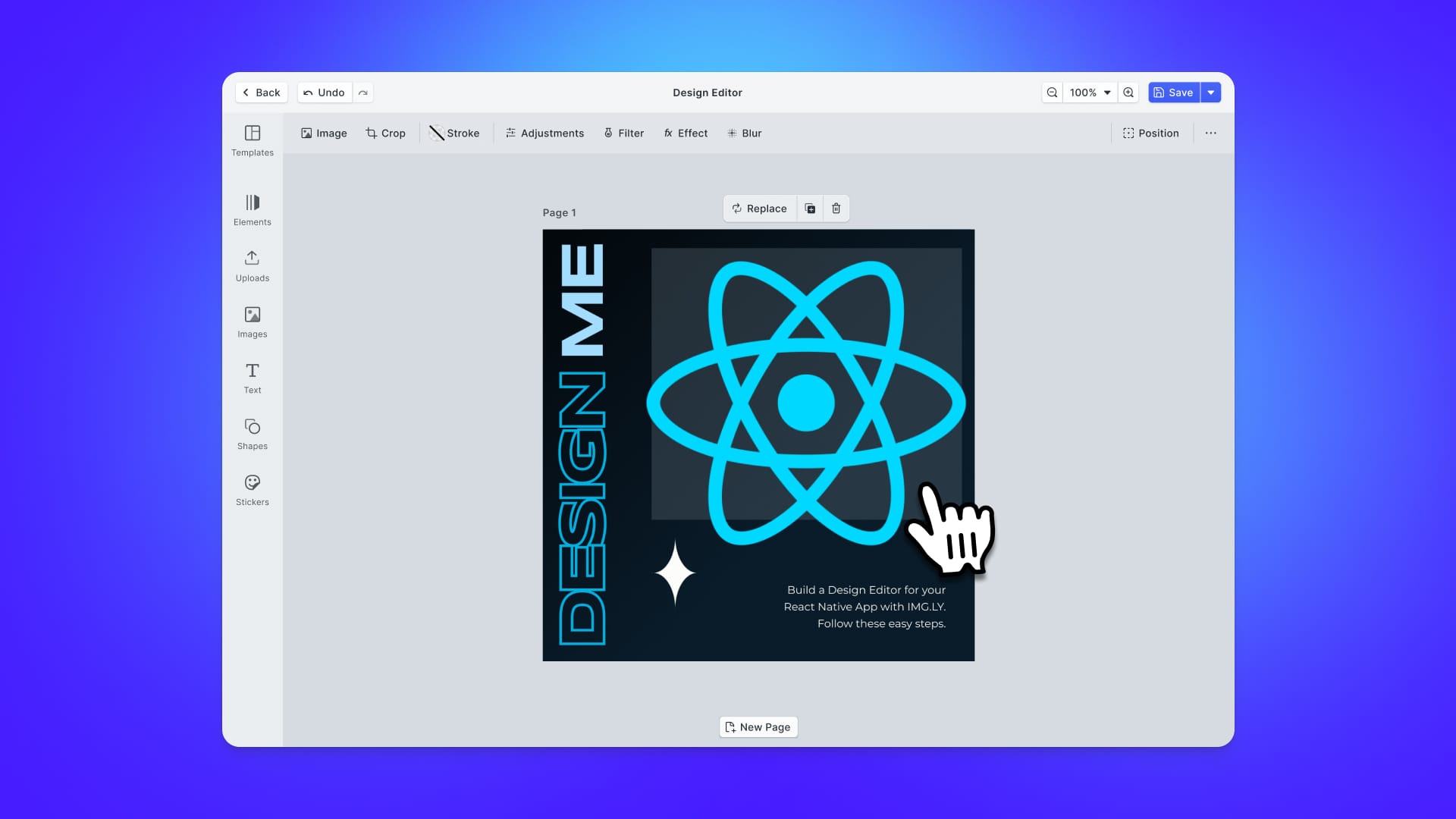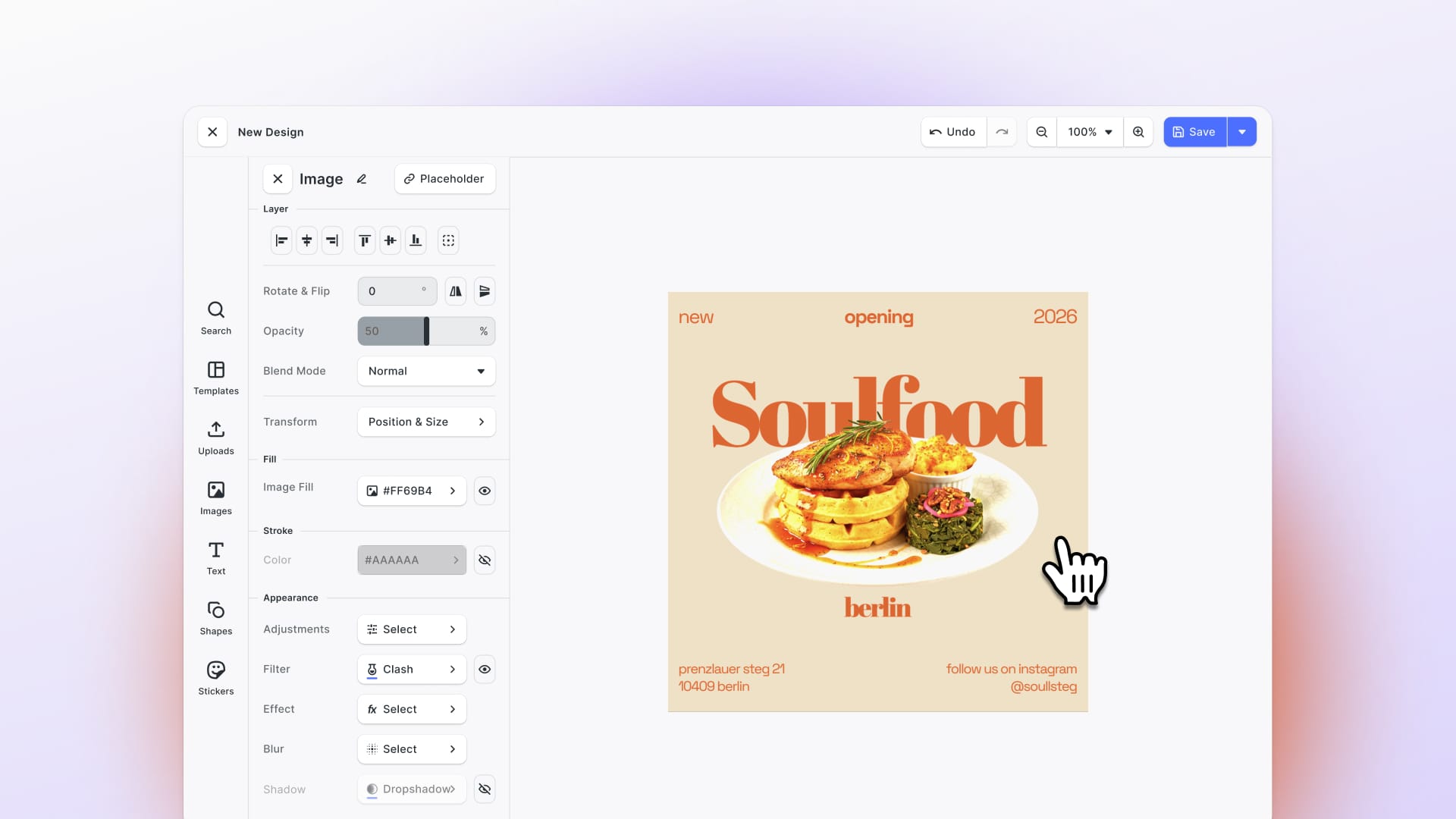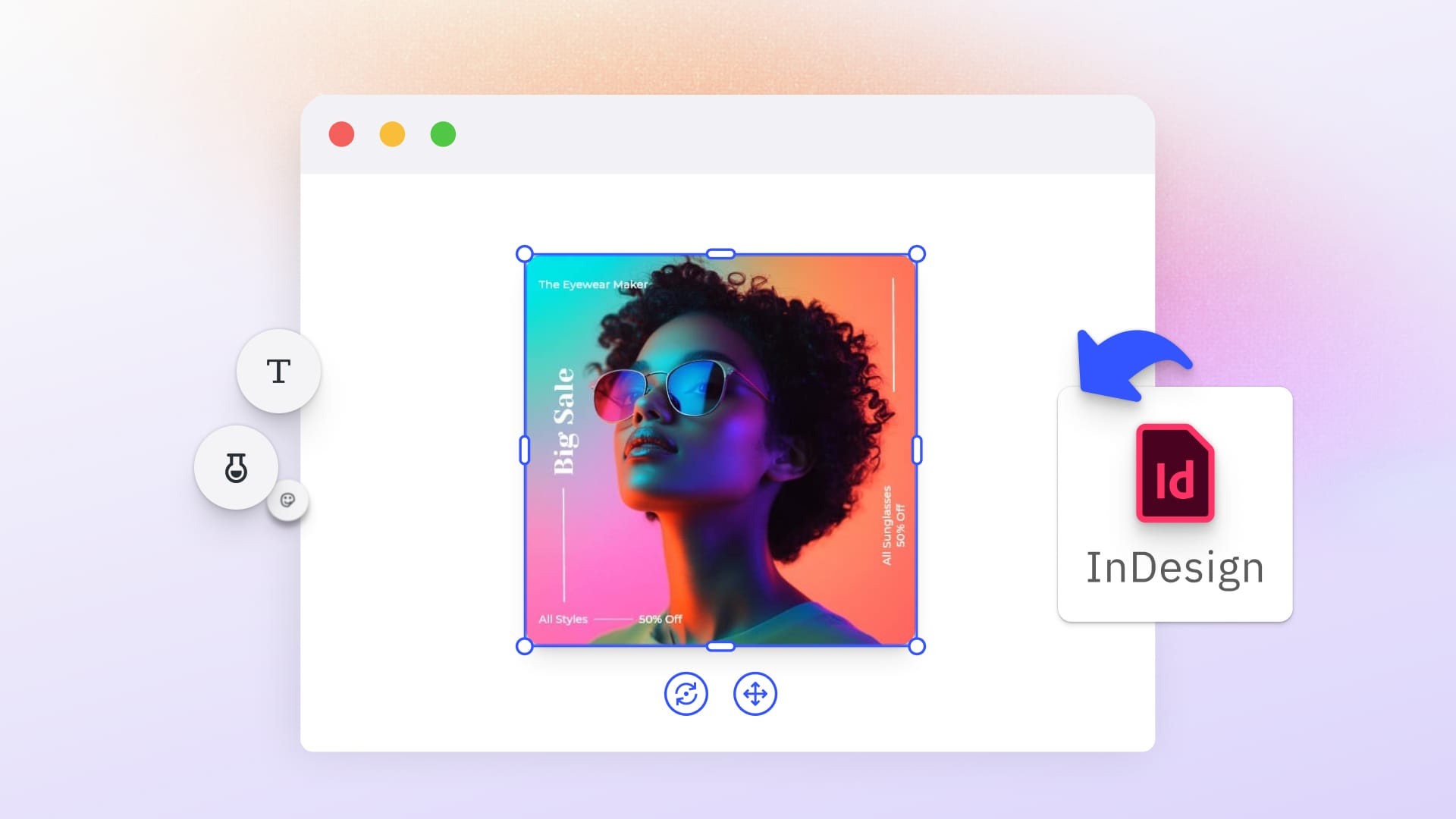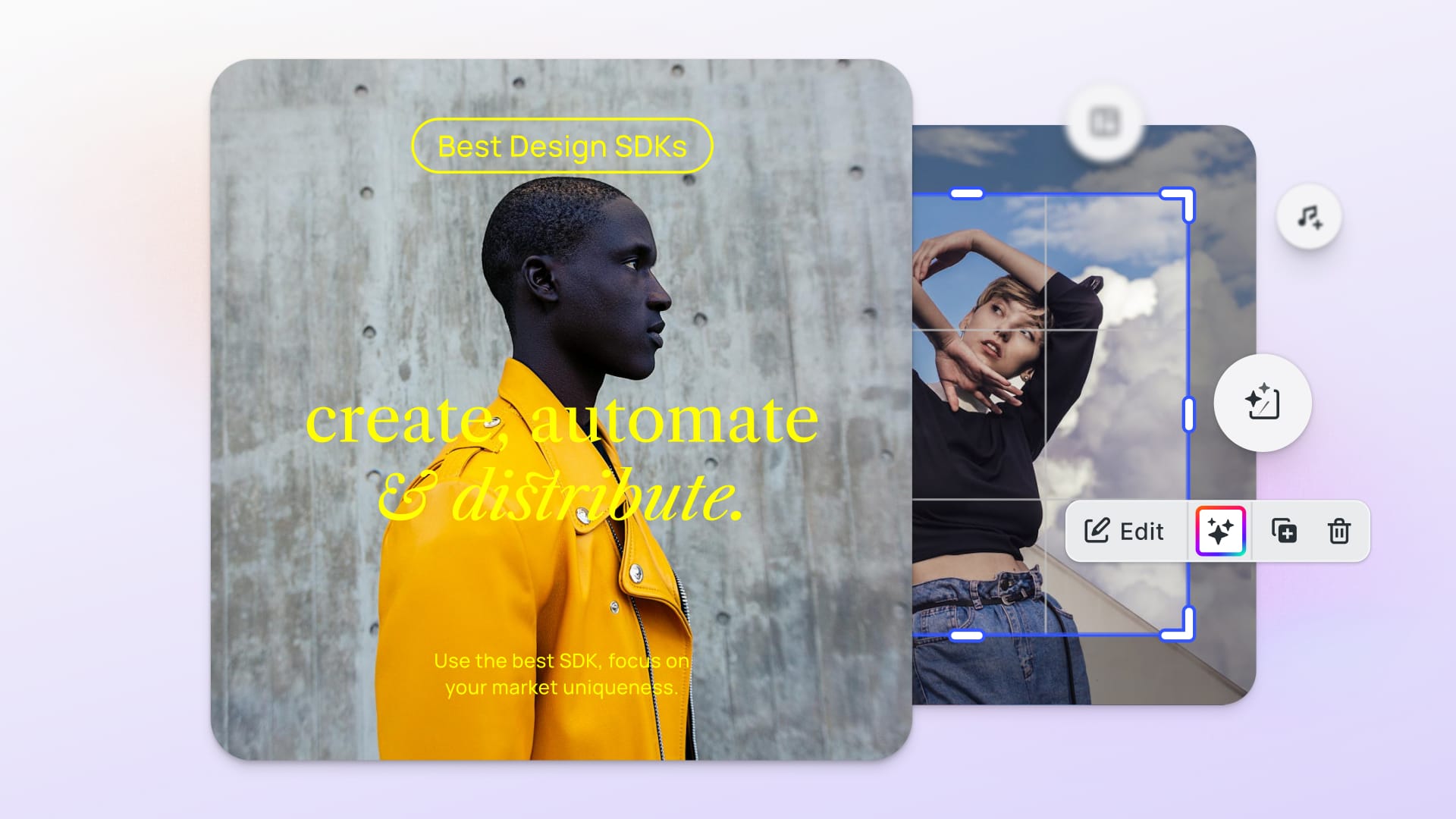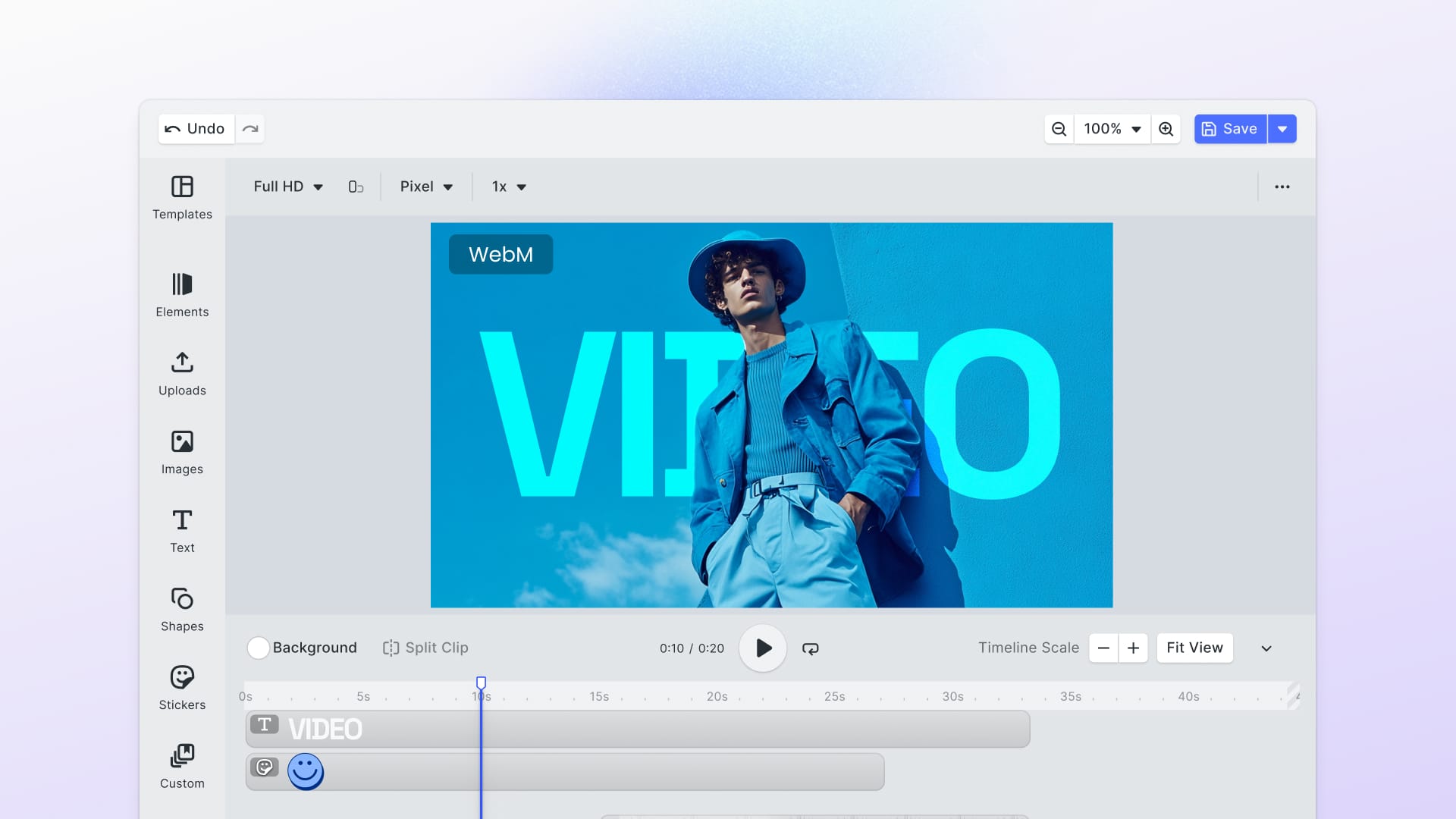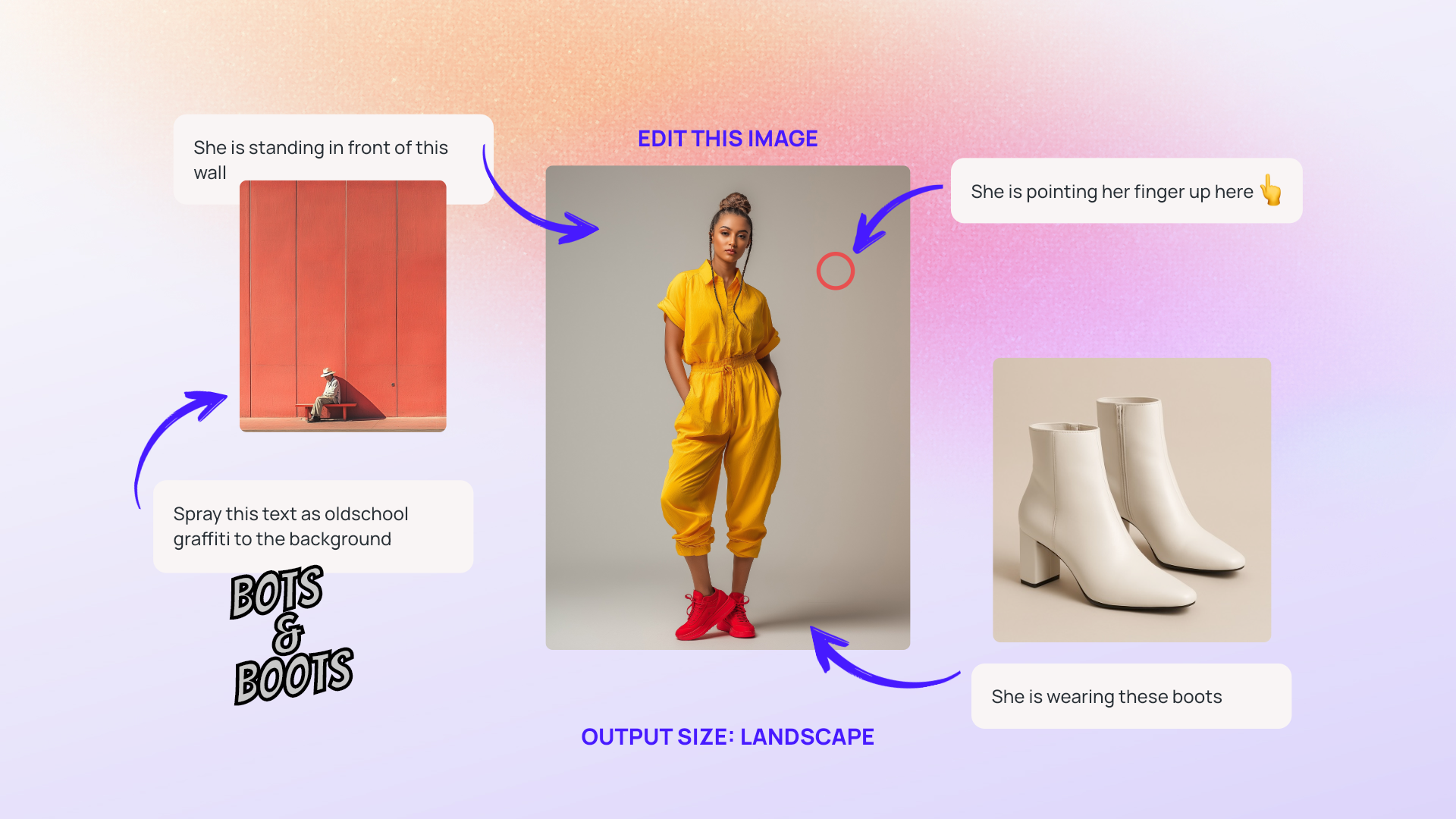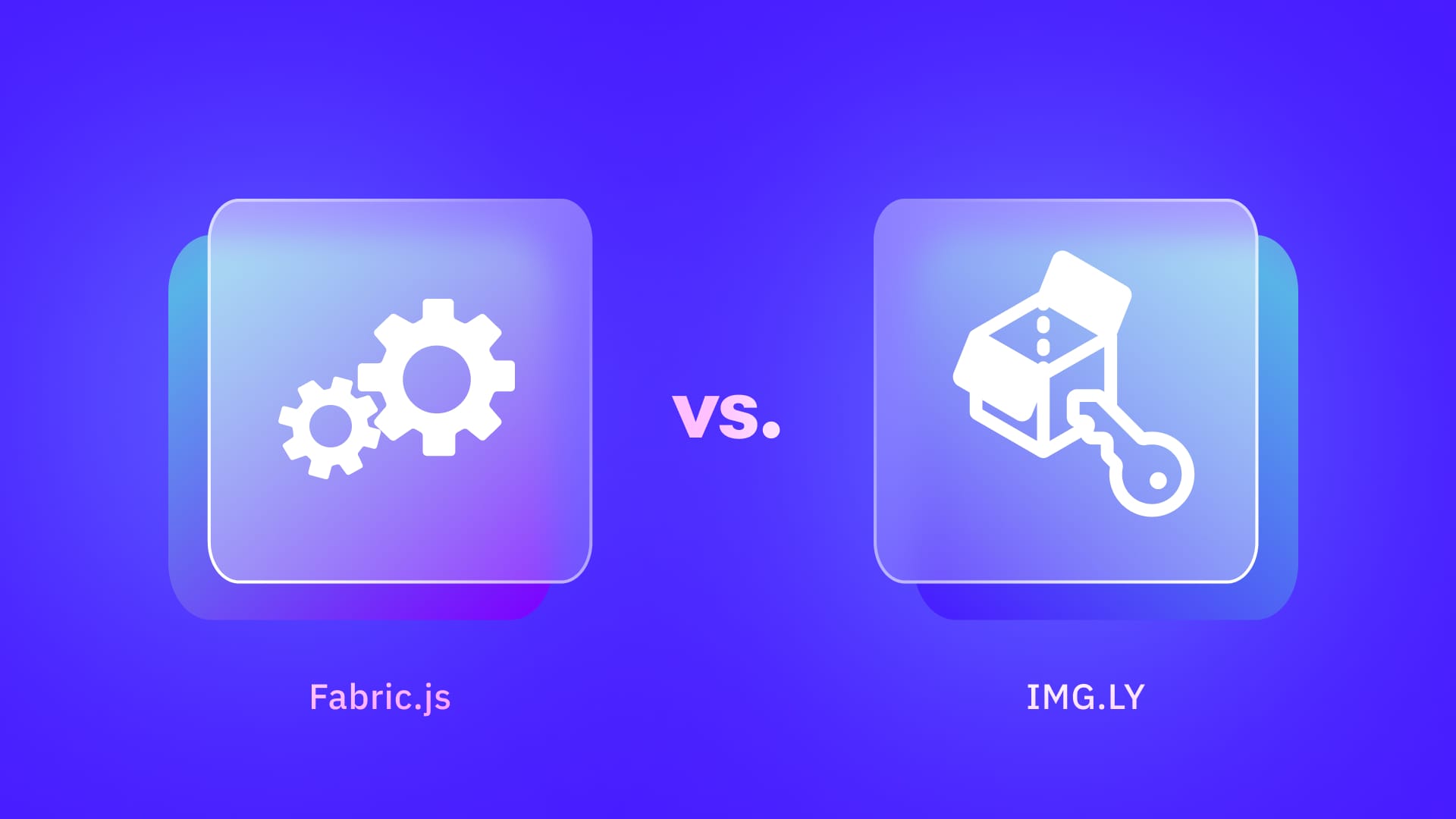Learn how to integrate IMG.LY's design editor for React into your web app and explore various use cases and customization options.
It is no surprise that content asset generation is a key for businesses in marketing and promotion, as well as for users on social media. Whether it is images or videos, these are the types of posts we engage with and relate to the most as human beings—much more than plain text.
Most content that resonates with an audience is not created from scratch. Instead, it often comes from pre-designed designs that are reused, repurposed, and adapted to fit different content or goals. That is why adding a design editor to your React application is so valuable.
In this guide, you will learn how to build a React design editor using the CreativeEditor SDK (also known as CE.SDK). We will also cover when this is useful and the customization options the editor supports.
For a quick start, check out the GitHub repository with the full code integration.
Let's dive in!
Why Add a Design Editor to Your React App?
Before answering the question, you must understand what a design is and how helpful it can be. In this context, a design can be defined as a set of predefined assets, text overlays, placeholders, and other elements arranged in a specific layout.
Users can use designs to create images or videos with a particular structure and for specific use cases at scale. Thus, a design editor would enable your users to create personalized assets—and in the case of a React application, directly within the browser.
Building such a platform is not a piece of cake. A robust design editor requires numerous features, such as intuitive drag-and-drop functionality, template management, image manipulation tools, and more. It also generally requires integrations with third-party services and dependencies to enhance its capabilities.
Fortunately, an all-in-one solution like CreativeEditor SDK from IMG.LY makes it easy to embed this powerful design editor into your application. It supports various programming languages and technologies, including React. With extensive features and customization options, CE.SDK has no limits on the types of designs users can generate.
CE.SDK features adaptable design tools for diverse industries and use cases, such as social media post creation, digital asset management, and AI-assisted content personalization. That is why it is used by hundreds of customers, including governments, Fortune 500 companies, and dozens of startups.
CreativeEditor SDK is trusted by companies like Swiss Post, Brother, Optimizely, HP, and many more.
How to Integrate a Design Editor in React
Follow this step-by-step tutorial to see how to quickly set up a React design editor in your web app using CreativeEditor SDK. For a complete guide, read our tutorial on building a Canva alternative in React using CE.SDK.
Integrate CE.SDK into your React app using the instructions below!
Requirements
Before getting started, ensure that you meet the following prerequisites:
- The latest LTS version of Node.js: If you do not have it installed, download it from the official site and follow the installation instructions.
- A React 18+ application: If you do not have one set up, follow the instructions below to create it.
- A CreativeEditor SDK license: In case you do not have a license, sign up for a free trial or buy a license.
If you do not have a React project set up yet, create a new one using Vite:
npm create vite@latest my-react-video-editor-app -- --template react
Open your project in a JavaScript IDE, and you are all set to start coding!
Install CE.SDK
Install CE.SDK by adding the @cesdk/cesdk-js package to your project's dependencies:
npm install @cesdk/cesdk-js
Your package.json file will now list it as a dependency:
"dependencies": {
"@cesdk/cesdk-js": "^1.41.1",
"react": "^18.3.1",
"react-dom": "^18.3.1"
}
Create the Design Editor Component
In the src folder of your React project, create a DesignEditor.jsx file. This will house your CE.SDK-based React design editor component.
Inside it, import CreativeEditorSDK from @cesdk/cesdk-js:
import CreativeEditorSDK from "@cesdk/cesdk-js";
Next, initialize your video editor React component with the following logic:
// src/DesignEditor.jsx
import CreativeEditorSDK from "@cesdk/cesdk-js";
import { useEffect, useRef, useState } from "react";
// your CE.SDK license and user configs
const config = {
license: "<YOUR_LICENSE>",
userId: "<YOUR_USER_ID>",
};
export default function DesignEditor() {
const cesdk_container = useRef(null);
const [cesdk, setCesdk] = useState(null);
useEffect(() => {
// if the CE.SDK container has already been initialized
if (!cesdk_container.current) {
return;
}
let cleanedUp = false;
// initialize a CE.SDK instance
let instance;
CreativeEditorSDK.create(cesdk_container.current, config).then(
async (_instance) => {
instance = _instance;
if (cleanedUp) {
instance.dispose();
return;
}
// customize the design editor behavior...
setCesdk(instance);
}
);
// clean up the CE.SDK instance
const cleanup = () => {
cleanedUp = true;
instance?.dispose();
setCesdk(null);
};
return cleanup;
}, [cesdk_container]);
return (
<div
ref={cesdk_container}
style={{ width: "100vw", height: "100vh" }}
></div>
);
}
Replace <YOUR_LICENSE> with the license key from CreativeEditor SDK, and <YOUR_USER_ID> with your user ID to optionally track monthly active users (MAUs) across different devices.
The component defined above embeds CreativeEditor SDK into an HTML <div> element. See how to customize and use it in the docs.
Use the Component
You can now import the DesignEditor component as below:
import DesignEditor from "./DesignEditor";
Then, add it to the DOM as follows:
<DesignEditor />
This will open the design editor with the preset, enabling users to place assets, set constraints, and perform other tasks to create their final designs.
React Design Editor Use Cases
Now that you are familiar with integrating a React design editor into your web app. It is time to explore key use cases and see how CreativeEditorSDK can cover many scenarios.
Social Media Publishing
CreativeEditorSDK offers a wide suite of tools to help users easily create high-quality, personalized, on-brand social media assets in your React application.
With a vast library of professionally designed templates, it streamlines the design process and ensures consistency across multiple platforms. Users can efficiently produce engaging content tailored for
Key features include customizable dimensions, filters, placeholders, and text overlays. These give users what they need to craft content optimized for various social networks, such as Instagram, X, LinkedIn, and more. That is possible thanks to platform-specific export options to produce ready-to-upload assets.
The SDK’s capabilities extend beyond static images, supporting the creation of dynamic short videos, stories, and reels. Do not forget that CE.SDK can also function as a modern React video editor.
Digital Asset Management
DAM, short for Digital Asset Management, is the process of organizing, storing, and efficiently retrieving a wide range of digital files.
CreativeEditorSDK supports DAM by helping teams centralize asset creation and editing directly within an embeddable React design editor—eliminating the need for external tools. This is achieved through features like pre-defining and locking branding elements—including logos, fonts, and color schemes—to ensure brand consistency across all generated content.
Additionally, CE.SDK offers :
- Design validation tools to prevent the creation of misaligned assets.
- Automatic asset generation to streamline content variations.
- Robust asset management features for handling both generated content and external assets retrieved via third-party APIs.
Marketing Automation
Businesses can use CreativeEditor SDK to scale marketing campaigns through dynamic, unique, customizable design templates. In detail, this design editor allows you to generate campaign materials—like personalized flyers, ads, or banners—quickly and at scale.
Key features for marketing automation include:
- Automation: Integrate with CRM or marketing tools to auto-populate templates.
- Dynamic Templates: Easily create content with placeholders or custom text variables for personalized outputs and A/B testing.
- Brand Compliance: Lock assets like logos and fonts for consistent messaging and branding.
AI-Powered Applications
AI is rapidly becoming a key component of more and more applications, with many integrating it in some form. Still, a critical step is often overlooked: manual editing and supervision.
CreativeEditorSDK bridges that gap by seamlessly integrating with AI-powered workflows while guaranteeing users the ability to manually define constraints, placeholders, and rules that the AI-driven automation process must follow.
Example of how a CE.SDK-powered React design editor could work with AI includes:
- Automated template suggestions based on industry or use case.
- Prompt-based content generation where users describe their needs, and the app delivers a draft design.
- Automated content optimization, where the AI evaluates design elements and suggests improvements for readability and visual appeal.
AI-generated content is impressive, but it is essential to find the right balance between automation and manual control in the content generation process for the best results.
Product Mockups
CreativeEditorSDK simplifies the creation of product mockups, packaging designs, and marketing materials, including printable brochures and business cards.
CE.SDK features powerful customization tools and flexible capabilities, including alignment guides and snap tools to ensure perfect positioning. Additionally, color pickers and vector shape editors enable you to explore and create professional design concepts.
E-Learning Materials
Thanks to CreativeEditorSDK, you can integrate a design editor into your React e-learning application.
The embeddable design editor supports the entire process of creating e-learning materials, including custom graphics like annotations, diagrams, and visual explanations, or videos recorded directly from the camera by the teachers/educators/coaches. The component also allows for the creation of unique and customized student certificates.
Those features empower educators and content creators in the education sector to craft visually engaging and impactful learning materials.
Customization Options With CreativeEditor SDK
CreativeEditor SDK does not provide a static React design design experience. Instead, it offers extensive customization options to align with your application’s branding and workflow. Key customization options are:
- Theming: Adjust the editor’s theme to match your app's design. Choose from built-in themes, generate new ones using the theme generator, or create a custom theme manually. Test themes in the demo page.
- Custom UI Plugins: Add custom UI components to fit your design style through custom plugins.
- Enabling/Disabling Features: Tailor the editor by enabling or disabling features like specific fonts, templates, or tools.
- Toolbar Customization: Reposition toolbar elements, change icons, or rename tools to suit your needs, creating a unique editing experience.
- Custom Templates, Assets, Themes: Add your own templates, assets, or themes for a more personalized user experience.
- Media Libraries: Set up customizable, sortable media libraries. CE.SDK supports integration with third-party libraries, allowing easy access to external media assets.
- Custom Integrations via Events: Hook into the editor's events to trigger workflows, save progress, or integrate with external systems.
- Internationalization: Adapt the design editor component for different languages and regions with full i18n support. Overwrite and extend text strings in any language.
Conclusion
CreativeEditor SDK’s compatibility with React's component-based architecture and large set of features ensures simple integration into any project, making it ideal for a wide range of industries—from marketing and e-learning to e-commerce and social media.
A CE.SDK-based design editor offers UI customization and unique feature options to adapt to any use case. Additionally, its support for AI workflows ensures your application remains future-proof and ready to meet evolving user needs.
By following the steps outlined in this blog post, you can bring professional-level design editing features to your web users. Explore CE.SDK’s capabilities and dive into the docs.
Stay tuned for more updates, and please reach out if you have any questions. Thank you for reading.
Over 3,000 creative professionals gain early access to our new features, demos, and updates—don't miss out, and subscribe to our newsletter.

